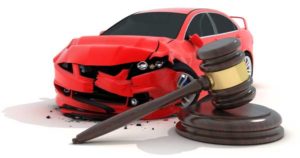Auto Accident Injury and Repair Resources – Odometer
Auto Accident Injury and Repair Resources – Odometer
An odometer is responsible for keeping track of the distance a vehicle has traveled. Modern cars normally contain digital odometers, while older ones have mechanical ones. The numbers on the digital readout are similar to those on an alarm clock. Depending on the age, mechanical models contain either five or six rotating disks. The disks roll through a set of tiny squares that display the current amount of miles your vehicle has journeyed. In updated vehicles, digital odometers are often incorporated into mechanical displays and positioned below the speedometer.
Aside from recording the total number of miles traveled, an odometer is also an indicator of the wear and tear that a vehicle has been subjected to. Sometimes, small used car dealerships trying to make an extra buck incorporate a technique in which they roll back a mechanical odometer to give customers the impression that the car has less mileage on it. There are laws that have been established to prevent fraudulent behavior of this sort; all garages and mechanics are required to maintain thorough documentation of odometer readings anytime a vehicle is serviced.
General problems and repairs
Mechanical odometers are easily repairable if they malfunction. However, electronic odometers must be replaced if something goes wrong. The primary problem with mechanical odometers is that the dials wear out, or the gears controlling these dials become stripped. The level of difficulty involved with fixing the odometer yourself is based on the automobile’s make and model; repair procedures will differ depending on the car. Here is an example of the instructions you would follow to repair a faulty mechanical odometer in a Porsche 933:
1. Carefully disengage the speedometer from the dashboard with a covered screwdriver.
2. Pry the rubber ring from the outer edge with a flat screwdriver.
3. Once you’ve loosened it a bit with the screwdriver, you should be able to pull it out manually.
4. Undo the trim ring and four screws located in the back of the unit. Make sure you remove the delicate metal ring from the assembly’s edge with caution.
5. There is a wide post on top of the slim post of the reset button. Steady the assembly to prevent the lever from being tampered with where it connects with the drive gears.
6. Push the speedometer needle into the shaft without yanking up.
7. Turn the needle until it stops, and cautiously pull the needle up while rotating it back and forth because it is a very fragile piece.
8. Take out the two screws in the faceplate.
9. Lift up the motor. Now, the drive gear and pod in should be in view. The pod should contain tattered or broken gear.
10. Insert a new gear in its place.
11. Complete steps one through ten in reverse to reassemble the dash. Again, handle the speedometer needle with care.
Basic maintenance
Unlike other parts of the car that are easily accessible, the odometer is an internal mechanism that should not be tampered with. You wouldn’t want to risk harming the speedometer needle simply for the sake of a senseless checkup; disrupting the odometer to inspect it for no apparent reason could easily damage it. Also, never reset the trip meter while the vehicle is in motion because it may negatively impact the odometer’s gears. It’s best to do this only when the car is parked or idle. Call us with any bquestions
